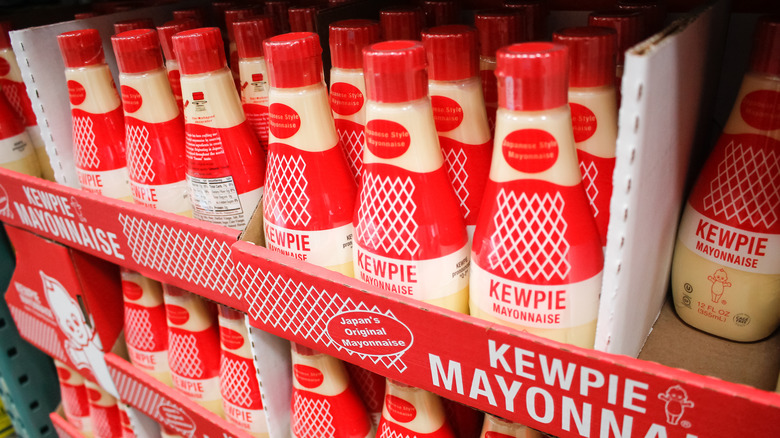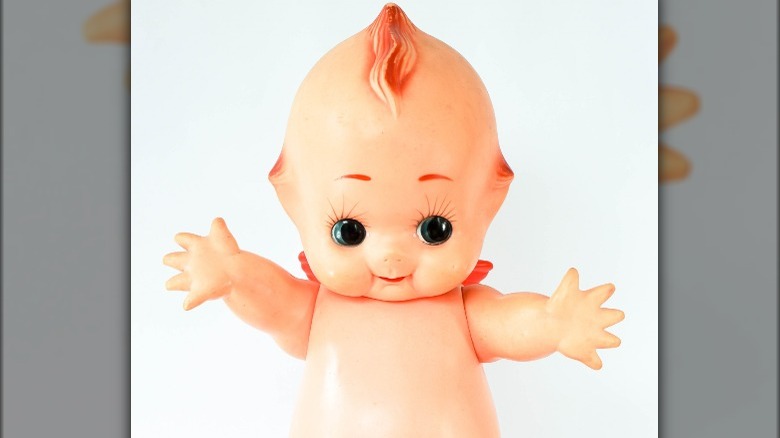Why Kewpie Mayo Has A Baby On Its Logo
Beloved by all who taste it, Kewpie mayo has become a sensation. While traditional mayonnaise is praised for its versatility, the Japanese condiment goes a step beyond, offering a custardy texture and hit of umami. Of course, Kewpie mayo's one-of-a-kind packaging also plays a role in its appeal. The red-capped, soft and squeezable bottle features an adorable cartoon baby — but why use a cherub as the logo for a mayonnaise brand?
Unlike a typical jar of American mayonnaise made with whole eggs and distilled vinegar, Thrillist explains that every bottle of Kewpie mayo is crafted with solely egg yolks and a unique blend of multiple kinds of vinegar, along with a pinch of salt, and MSG for added savoriness. Just like any other mayo, Kepwie makes a great addition to sandwiches, salad dressings, slaws, and casseroles, but can also dazzle when drizzled over Japanese-inspired sushi bowls and fried takoyaki.
Though created in Japan, Kewpie's history is one with international influences. After learning about food production abroad while working for Japan's Department of Agriculture and Commerce, Pogogi explains that Toichiro Nakashima decided to found a company in 1919 called Shokuhin Kogyo Co., which would later be renamed Kewpie Corporation. Dabbling mainly in sauces, Nakashima was inspired by American mayo but knew it must be adapted for a Japanese palate, prompting the creation of Kewpie mayo a few years later. Now for the fun part: the branding.
A (beloved) sign of the times
Good branding is vital for a business as it can separate a company from its competitors and represent the brand. Naturally, a logo plays a huge component as it can say many things about a company's values, style, and quality without a single word of copy, notes Forbes. A memorable (and sometimes even bizarre) logo can even act as a marketing strategy to pique consumer interest, which is definitely the case for Kewpie mayo.
Recognized for intertwining marketing and political activism, American illustrator Rose O'Neill is behind the iconic smiling cherubs, dubbed Kewpies. Inspired by classic cupids, Smithsonian Magazine shares that the rosy-cheeked babes were brought to life in 1909 for a comic in Ladies' Home Journal, but quickly captivated all who saw it, causing many magazines and outlets to adopt the image — O'Neill, however, continued to use the cute characters to spread messages in favor of women's rights.
In an interesting turn of events, O'Neill's feminist Kewpies eventually found a home on the front of Japanese mayo. Following the effect of the Great Kanto earthquake in 1923, Kewpie explains that Nakashima noticed a societal shift (including the Westernization of female fashions, which he predicted would change diets), prompting him to develop a more nutritious mayo, that he dubbed Kewpie, due to the doll's extreme popularity at the time. The rest, as they say, is history.

